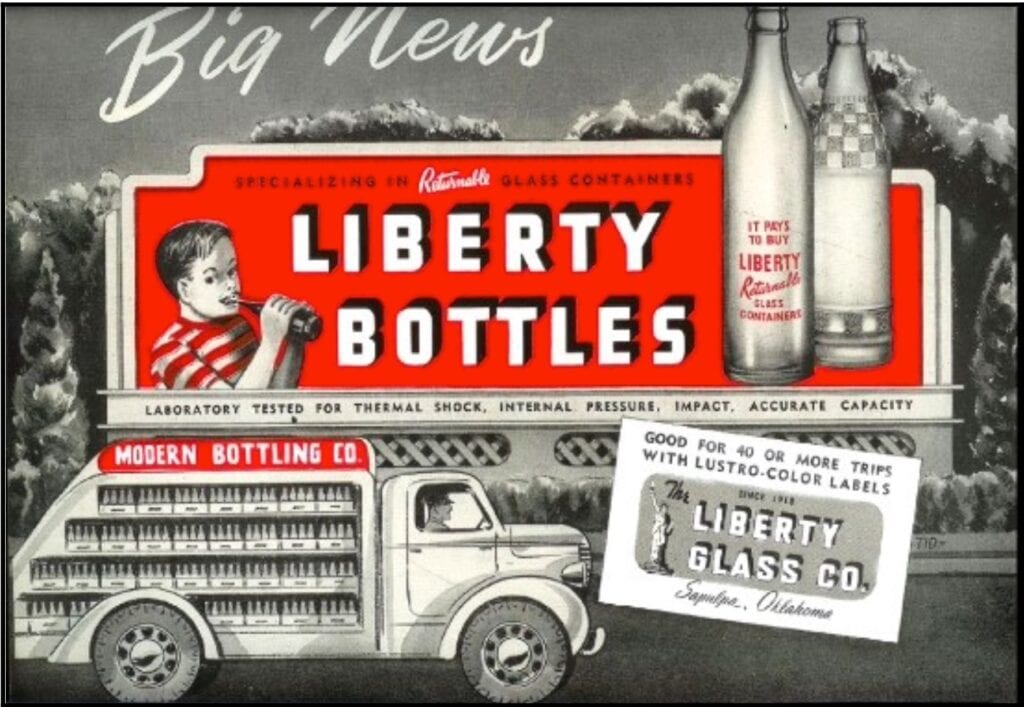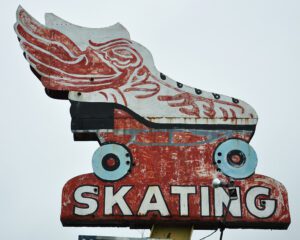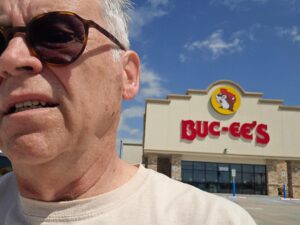Glass pioneer George F. Collins, Sr. was born on a farm in Thayer, Kansas. After graduating from high school there, he entered Baker University in Baldwin, Kansas. After his post-secondary education, Collins became a school teacher and later a superintendent in Neodesha, Kansas.
Following his tenure as an educator, he worked on a farm in Texas. George returned to Kansas, moving to Coffeyville, where he was employed by the Daily Journal.
George Sr’s association with his father-in-law John Weaver, who started the Premium Glass Company in 1908, would determine his destiny, and leave a lasting legacy for Sapulpa.
This was the Collins family’s first foray into the glass business and would eventually lead the Collins to move to Oklahoma.
In the fall of 1912, George Fulton Collins, Sr. moved the Premium Glass Company from Coffeyville, Kansas to a location that was out in the country northeast of Sapulpa, after a fire devastated the plant. Collins selected Sapulpa at the behest of the Chamber of Commerce. However, the primary reason for relocating to Sapulpa was Oklahoma’s “special” sand, which is the principal ingredient in the manufacture of glassware. The geological term for this sand is “Mississippi Sand,” which is found abundantly in Oklahoma, and produces high-quality glass sand with a high silica, limestone, dolomite, soda ash, and feldspar content. Equally significant was the cheap natural gas, due in part to the Glenpool oilfield.
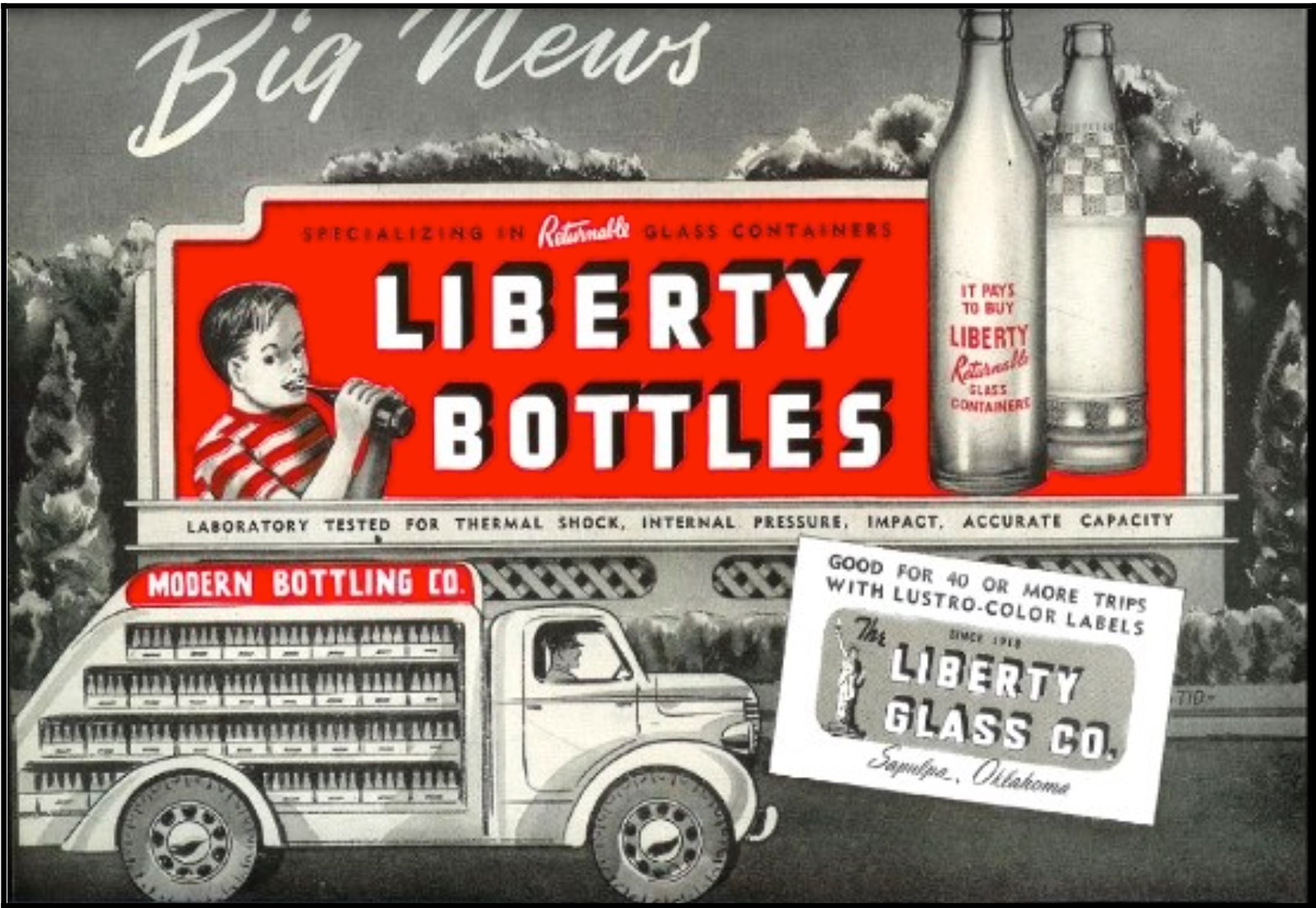
Plant operations did not begin until 1913. At one time there were four glass plants operating in Sapulpa—Premium, Schramm, Sunflower, and Bartlett-Collins. Because of its dominance in the glass industry, Sapulpa became known as “The Crystal City of the Southwest.”
After starting Premium, George F.Collins, Sr. formed a partnership with H.U. Bartlett and established Bartlett-Collins Glass Company in 1915. The partnership was dissolved in 1918, and on August 5th of that year, Collins founded the Liberty Glass Company which superseded the Premium plant, and which began manufacturing milk bottles and other beverage containers.
George F. Collins, Sr. named the new enterprise Liberty Glass because Liberty war bonds were being sold during WWI and he thought the name was appropriate for glass products. Historical evidence shows Collins was a patriotic man and it was evidenced by his naming the company Liberty.
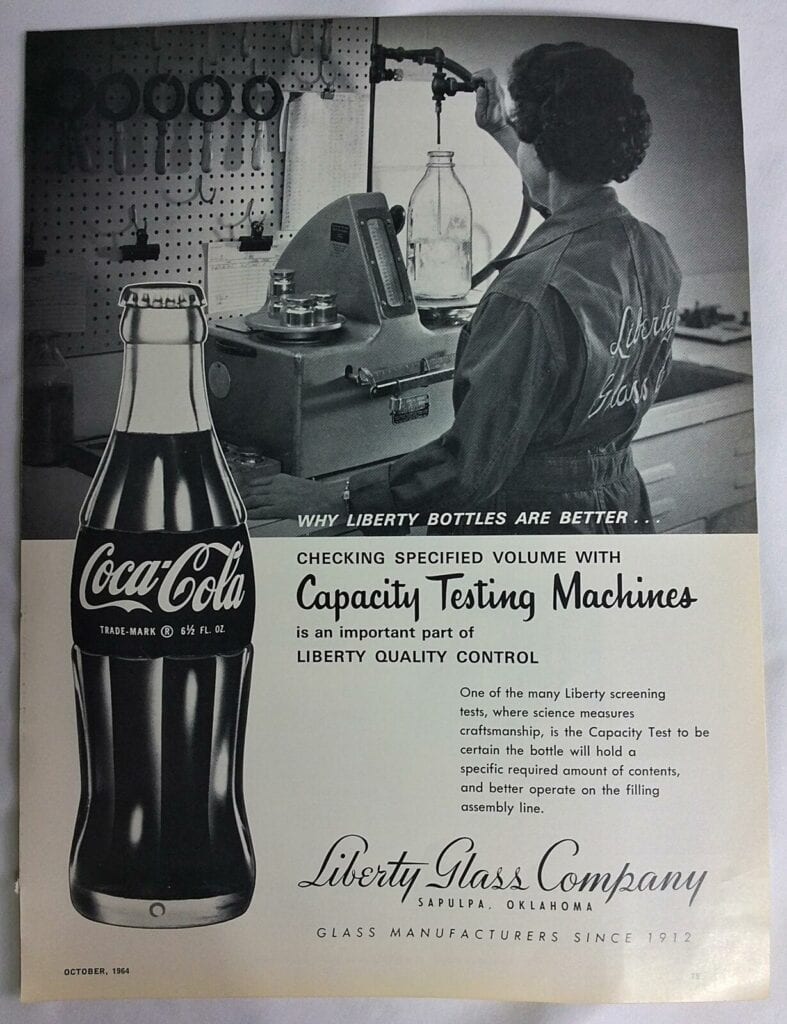
George Sr. served as President of Liberty Glass until he retired due to health problems. He was succeeded by his son, George Jr., but retained the chairmanship of the board until his death in 1939.
George Jr. was only in his twenties when he inherited Liberty Glass, which at the time was heavily in debt. Even though he had no formal degree, he never stopped studying and trying to “stay on the leading edge” of the glass industry.
The Depression and the Dustbowl in the 1930s took their toll on the business and its employees, but the Collins family persevered.
In line with George Sr.’s patriotism, Liberty Glass formed the “Liberty Liberators” in 1944. This was a group of over 3,000 men and women who collaborated to exceed their quotas of war bonds. The goal was to build more Liberator Bombers to help the 118 men who represented the company in the war.
Liberty Glass was always a leader in the glass industry. In 1920 the Sapulpa Herald wrote that Liberty Glass was the only glass plant west of the Mississippi River making milk bottles.
Another milestone was the introduction of the “ecotainer” in the 1940s. It was a square-shaped, flint glass, reusable milk bottle. Among its many advantages over the old round type were large savings in space and weight.
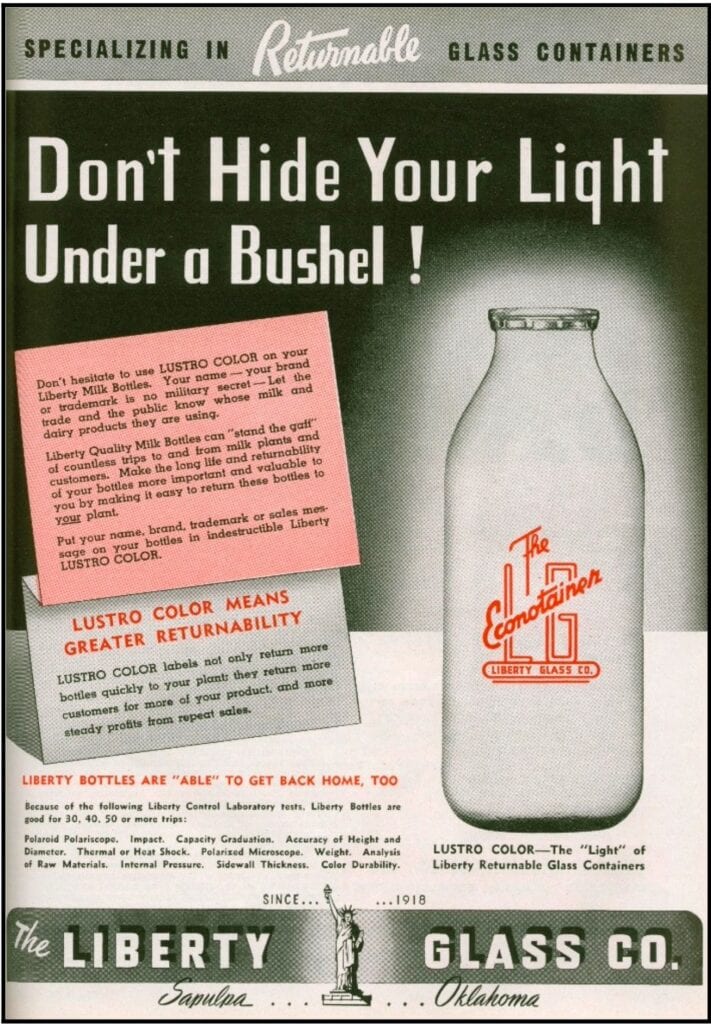
In 1948, Liberty Glass again was a pioneer in the glass industry, developing the world’s first multi-color process called “Lustrocolor.” It was a process whereby color pigment filtered into glass surfaces, and customers could choose from a variety of twelve different colors in any combination. Furthermore, the labels and artwork could be applied to all four sides or panels of the bottle.
This method revolutionized the color decoration of glass products throughout the world.
Several of these one-of-a-kind bottles still exist and are displayed at the Sapulpa Historical Museum.
Frank Collins, the half brother of George F. Collins, Sr. was the manager of Liberty Glass until his retirement in 1963. He was known as “Uncle Frank” and he served as Vice-President of the board.
Loreine Collins Dietrich, George Jr.’s older sister, was close to her brother and served as Senior Vice-President and Director of the company for more than 40 years. She also served as the editor of the Glasser Newsletter. Roger Collins, the youngest son of George Jr. and Beverly (Lorton) Collins, received an undergraduate degree in electrical engineering from Princeton University and an MBA from the Wharton School of Business.
Roger’s technical expertise helped transform the IT department of Liberty Glass. With the help of adroit employees like David Block and David Fieker, Liberty Glass had an IT department second to none in the United States.
George F. Collins III (Fulton), the oldest son of George Jr. and Beverly Collins, earned a BS in Economics from Stanford in 1965, an MBA in 1967, and one year later, a Masters of Science in Operations Research. He, along with Roger, ran the business after their father’s death, but each had a different management style. Roger ultimately decided it was best for him to leave the company and Fulton then ran the company until its sale.
1983 was a dark year for Liberty Glass. Fulton Collins represented management during Union negotiations so the two groups could come to terms on management rights. On April 1, 1983, 350 members of the Glass, Pottery and Plastic Allied Workers Locals 185 and 128 went on strike.
The dispute was not over wages, rather it was about employees benefits, specifically insurance, retirement, and vacation. There were incidents of violence during the 21-month strike. In 1985, Liberty Glass replacement workers voted the Union out. The National Labor Relations Board ruled that the vote of striking workers did not count.
After the strike, Liberty pinpointed two primary goals. One was to embrace leading edge technology and the other to become the low-cost and best-quality producer of soft drink bottles.
This strategy ensured the company’s success, yielding lower costs than plastic and glass competitors.
After making Liberty Glass one of the premier glass companies in the world, Fulton started thinking about selling the company. After much deliberation, he sold it in 1994 to Foster-Forbes. Fulton felt a sense of relief and he turned his focus to his community and family.
Liberty has gone through several owners since then, currently, the plant is owned by a global company, the Ardagh Group.
Liberty Glass was a major employer in Sapulpa, at one time employing 600 people. I think just about everybody I know has at one time worked for Liberty Glass, including myself.
The Collins legacy lives on in the form of the Collins Foundation. The philanthropic organization was responsible for the construction of Liberty Park and continues to fund many worthy causes.
Sapulpa has throughout its history had an abundance of human assets with unsurpassed talents and community spirit; the Collins family is no exception.
I highly recommend visiting the Sapulpa Historical Museum to see the history of Liberty and its founders on display. I also strongly urge you to purchase “Liberty, Reflections of an Oklahoma Glass Company and its Family,” by Becky Dixon, and available for purchase at the Sapulpa Historical Museum.

